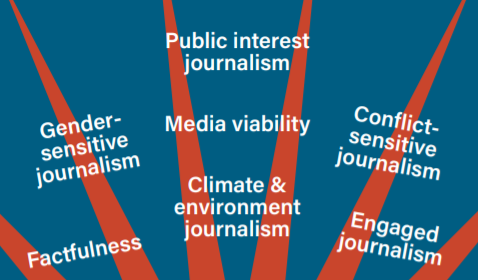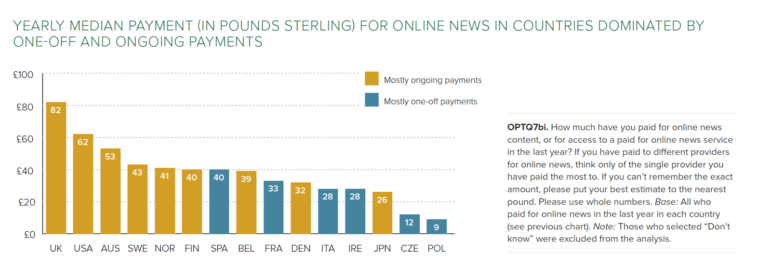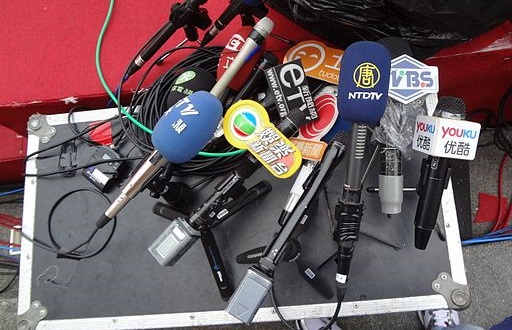

Can Crowdfunding Support Media Business Models?
 Monday July 6 saw the launch of The Ferret, a new Scottish investigative journalism platform, which joins an expanding list of media business models benefitting from crowdfunding.
Monday July 6 saw the launch of The Ferret, a new Scottish investigative journalism platform, which joins an expanding list of media business models benefitting from crowdfunding.
Given the seemingly increased popularity of this funding route many media players will understandably be asking if this source of income is for them. In this article we explore some of the benefits – and potential pitfalls – anyone exploring these channels needs to consider.
Why Go Down This Road?
Crowdfunding has become a major trend; being used to pay for – or unlock further backing – necessary for the creation of movies, technology and engines for social change. The sums of money involved can potentially be quite staggering.
So, given the continued challenge of making journalism pay, it’s no surprise that some media players have identified this funding mechanism as a potential panacea for their monetary woes.
As we reported in our analysis of the Reuters Institute for Journalism’s 2015 Digital News Report, audiences remain very interested in news; but the number of people who are prepared to pay for it online typically remains quite small.
Given this, it’s no surprise that media companies are experimenting with a range of monetising mechanisms; from paid for apps, to subscription and membership models, one off payments, events and micropayment initiatives.
They have enjoyed varying degrees of success, but there is no silver bullet, or one size fits all solution. All the evidence to date suggests it’s a question of different strokes for different folks.
3 Types of Journalism Crowdfunding
Nonetheless, in the crowdfunding arena, we are starting to see some elements of success, with each high profile example inspiring others to follow in their footsteps.
Typically crowdfunding can be seen as supporting three major areas of business activity:
1) Setting Up Sites Like Krautreporter and De Correspondent
The memorably named Krautreporter, a German based online community for long-form journalism, last year raised over €1 million to launch an ad-free online magazine. These monies came from over 18,000 members, each of whom pledged €60 to support the venture.
Inverting the usual model, this means the content is free but the community is behind a paywall. So these are not your ordinary subscribers, Krautreporter is “marketing a membership”.
Their ad-free philosophy is also shared by De Correspondent, a Dutch crowdfunded website which raised similar sums and has consciously moved away from traditional ad funded models.
Writing on TheMediaBriefing last month about De Correspondent’s business model, Neil Sharman noted:
“When I asked them if they would consider opening the doors to the right advertisers eventually they were adamant that they would not.”
“We’re basically in the business of building trust. We are only worried about what our members want. We don’t have any other stakeholders because we have no advertising on our website. The main reason for this is that you have to turn your audience into a target group,” they said.
2) Paying Salaries for Full-Time Roles
On a smaller scale, in 2014 two UK hyperlocal websites A Little Bit of Stone and the Brixton Blog and Bugle (their community newspaper offshoot) both ran successful crowdfunding campaigns.
Instead of seeking funding to cover the whole site, they aimed to fund part of it; arguably the hardest part: editorial overheads.
Raising over £15,000 from 145 backers, the team in Stone – a town in Staffordshire – sought funding to pay for part-time editorial support over a 12 month period, as well as developing a new look website.
Jamie Summerfield tells the Centre for Community Journalism why he crowdfunded, how he did it and what local people thought of his efforts.
Similarly, the London based Brixton Blog and Bugle, which received financial support from 512 contributors, used new funding to pay for their first paid editor.
Prior to this, as the team admitted:
“We’ve just about scraped by, managing to cover news articles ourselves alongside full-time jobs.”
The new role, they said, would ensure that the site didn’t miss “some of the news that we really should have been onto,” whilst also enabling them to “help train local aspiring journalists – something we’d like to be able to do even more of.”
3) Investment in Specific Stories / Named Journalists
Perhaps the most high profile example in this arena was Spot.US, which launched in 2008. The recipient of a $340,000 two-year grant from the Knight Foundation, the site – which aimed to test the concept of “community-funded journalism” – was later acquired by American Public Media, before being wound down in early 2015.
Undaunted by this high profile closure (Spot.Us had – at launch – been the recipient of such valedictory headlines as “How Spot.Us could help save journalism”) others have since picked up this mantle; although they each have slightly different business models.
Established sites like the Texas Tribune have used crowdfunding to undertake long-term investigative features, which fall outside of the parameters of their typical day-to-day activity. These efforts include “The Shale Life” a series looking at how “oil and gas production is changing lives and fortunes across Texas” and a new campaign, “Undrinkable” which will explore the lives of Texans who have no access to clean drinking water.
Meanwhile, The Ferret, the latest kid on the crowdfunded journalism block, was established due to concerns that important stories risked being overlooked.
“We care passionately about in-depth investigative journalism and we want to create a solid foundation upon which a sustainable future for public interest journalism in Scotland,” co-founder Peter Geoghegan told TheMediaBriefing.
To help decide which stories they cover, “we ran a public ballot on www.theferret.scot to choose our first investigation,” Geoghegan explains. “Fracking was chosen over NHS cuts and treatment of asylum seekers,” he notes, and the team is currently crowdfunding this investigation, having raised over £1,500 at the time of writing.
The sense of community that sites like the Texas Tribune and The Ferret are trying to imbue is perhaps most evident on Contributoria.com. Launched 18 months ago, since winning the Google sponsored IPI News Innovation content; it allows writers to propose article ideas, whilst the wider community chooses which proposals to fund each month.
Editor and co-founder Sarah Hartley told TheMediaBriefing that “we now have 5,000 writers among more than 14,000 members worldwide.” Collectively they “produce a monthly magazine online,” as well as “e-reader and print version[s].”
Success stories highlighted to us by Hartley include: an expose of the high street gambling industry, through to insights about how a small NGO is using art to change the lives of young Syrian refugees, as well as a feature about the eating of insects which went on to be a cover article for The Big Issue in South Africa.
Is It for You? 5 Essential Considerations
If you do decide to go down the crowdfunding route, then it is important to recognise that there are strings attached to crowd-funded income. Here are five strategic considerations which media companies need to reflect on, before deciding if this funding source is right for them.
1) Fees
Established crowdfunding platforms charge fees. At 5% – or more – this can make a sizeable dent in your campaign revenue. There is also the risk, manifest in some crowdfunding sites, that if you don’t hit your target, you don’t get any of the money. Even if you are just £1 short.
2) Editorial independence
What communal ownership means for editorial voice – and independence – is also an important consideration.
For large membership sites like De Correspondent and Krautreporter, members have no say over content. However, this isn’t the case with sites where the community has crowdfunded a particular story.
As a result, publishers need to be alive to the possibility that communities may revolt – or disengage – if they don’t like the conclusions of the piece they’ve funded.
3) Securing Repeat Business
Irrespective of this potential scenario, the challenge of converting consumers into long-term funders is a moot point for sites where funding is on a case-by-case (or story-to-story) basis.
As Joellen Easton, Business Development Manager at the Public Insight Network observed when writing about the closure of Spot.Us:
“The majority of Spot.us funders gave once and never returned.”
Avoiding churn and developing long-term paying relationships is the Holy Grail for all media businesses.
But it’s that little bit harder if payments are one-offs, with readers having no obligation beyond that.
4) Motivations for Funding
Easton also wrote that “most Spot.Us projects were funded by friends and family, as opposed to community members with an interest in or a need for that information,” which implies that the best – most valuable – stories were not always the ones that bubbled up to the top.
Again this indicates that a long-term membership model may be better in terms of providing more editorial control and flexibility. It’s interesting to note that The Ferret has a long-term aspiration to move to a subscriber model (2,000 subscribers willing to provide core funding by paying £3 a month,) “supplemented by issue by issue crowdfunding and the group’s earnings from selling on stories.”
5) Is Your Community Big Enough?
Finally, companies also need to be alert to the risk that sites which are too geographically focussed may not have a big enough community to sustain it. In this context, engaging communities of interest, rather than geography, may make for a more viable long-term approach.
Contributoria’s global outlook seems to lend itself well to this model.
“We tend to find that stories of a global, progressive outlook are the most popular,” Hartley says. “This month for instance we are seeking proposals for a special themed issue in conjunction with Vivienne Westwood.”
Open theme months, and special themed issues, thereby enables Contributoria to tap into a global audience, as well as a global contributor base.

Moving Forward
The success of these recent ventures suggests that crowdfunding is a potential business model which has legs. However, it’s not going to be for everyone.
Members of the public may well baulk at funding successful public or private enterprises, believing that their pockets should already be deep enough if an idea is worth pursuing.
The same, perhaps, is not true for start-ups and non-profits, and it’s this group of media publishers that we can expect to monopolise this type of funding approach.
Nonetheless, I’d expect that even for these media players crowdfunding will be a part of their funding mix, not their sole revenue source.
There will always be exceptions, but spreading your bets, particularly in such tough media markets, is often a necessity for most media organisations. As a result, although putting all of your eggs in the crowdfunded basket could work, it’s not an easy receipe to crack.
This post originally appeared on The Media Briefing. It is re-published with the author’s permission.
 Damian Radcliffe is Interim Editor and Chief Analyst at TheMediaBriefing. As a freelance digital analyst and journalist, he is a regular contributor to major media outlets such as the Huffington Post, BBC, and CBS Interactive (ZDNet). He is an Honorary Research Fellow at the Cardiff School of Journalism, Media and Cultural Studies, and a Fellow of the Royal Society of Arts. @damianradcliffe
Damian Radcliffe is Interim Editor and Chief Analyst at TheMediaBriefing. As a freelance digital analyst and journalist, he is a regular contributor to major media outlets such as the Huffington Post, BBC, and CBS Interactive (ZDNet). He is an Honorary Research Fellow at the Cardiff School of Journalism, Media and Cultural Studies, and a Fellow of the Royal Society of Arts. @damianradcliffe











